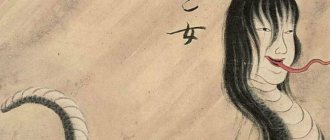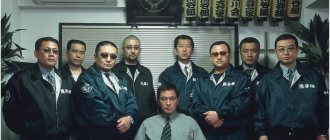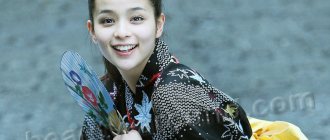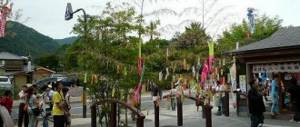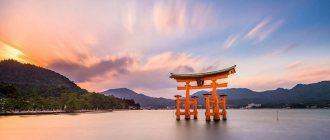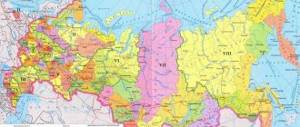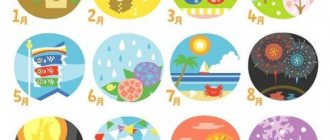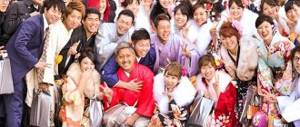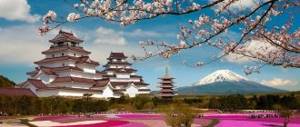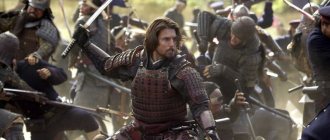The sakura tree has long been the symbol of Japan, but the holiday in honor of it is only part of the large-scale Flower Festival. When spring confidently comes into its own, on April 8, the Japanese celebrate Hana Matsuri, which can be called one of the grandest celebrations of their country.
A popular spring holiday dedicated to the day of the birth of Buddha. Not only adherents of Buddhism, but also residents of small villages, travelers, and guests of Japan go to large cities on the appointed day to join the incredible action. When did Hana Matsuri first begin to be celebrated? What amazing traditions certainly accompany this vibrant festival?
Flower Festival dedicated to Buddha's birthday
The appearance of the holiday
Buddha's birthday is celebrated in many Asian countries, but in Japan the date is fixed, and the celebrations themselves are associated with the flower festival, Hana Matsuri. The history of this day takes us back to 606, when the Japanese first began to celebrate the holiday. Historians believe that Chinese culture had a significant influence on the traditions of Hana Matsuri - it was in China that the basis of the holiday appeared.
As I said, in 606, Empress Suiko held celebrations for the first time to celebrate Buddha's birthday. The first place of celebration was Yamato Province.
The imperial palace was lavishly decorated with flowers, which later became the main attribute of the day and even turned into a kind of symbol. It’s simply impossible to imagine Hana Matsuri without them.
There are many traditional festivals in Japan, but Hana Matsuri holds a special place among them. Firstly, it lasts only one day, which is not typical for local large-scale celebrations. Secondly, it is celebrated in every region of the country. Celebrations dedicated to the young Buddha are held in all major cities.
History of the Autumn Moon Festival
The tradition of autumn moon watching has been known since the Nara era (710-794), but it received its most refined form in the refined Heian era (794-1185). Aristocrats and court ladies went to the mountains, from where the moon seemed especially bright and close, or gathered near the water to listen to the best musicians and contribute to the creation of a beautiful five-line tanka.
I look at the moon, And sadness penetrates into the very heart, Although not only for me The time of autumn has come.
Oe no Chisato (10th century)
The tradition of tsukimi quickly spread not only in high circles, but also among the common people. The peasants rejoiced at the end of the harvest, made offerings to the spirits of nature and did things that were not customary in normal times. Thus, since ancient times, the custom of secretly stealing one of the tsukimi-dango - rice balls - from the table has been preserved. The people called the holiday Meigetsu, that is, the Harvest Moon, they revered the seven autumn herbs and prepared special food.
On Tsukimi Matsuri days, preference is given to food that contains something round. In addition to tsukimi-dango, these can be soba or udon with a raw egg, jagaimo-manju - buns in the shape of sweet potato yams, usagi-manju - buns with a picture of a hare. Dishes made from soy, pumpkin and chestnuts are also popular.
Where was Buddha born?
Hana Matsuri should not be perceived as an ordinary colorful festival showcasing the beauty of flowers. First of all, this is a religious holiday, which makes you remember the legends about the patron saint of Buddhists, see the beauty in the world and experience harmony. However, the legend of the appearance of Buddha is closely connected with the beauty of flowers.
According to the ancient legend, which we know from sacred Buddhist texts, the beautiful Maya was walking towards her home. The road tired her, and she decided to relax and admire the flowers in Lumbini, one of the most wonderful gardens on earth.
Walking through the garden, Maya wanted to touch the branch with hydrangea flowers, but at that moment contractions began. The woman in labor was successfully delivered from her pregnancy, and Buddha was born in the midst of wildly blooming hydrangea bushes.
When the world saw the newborn, the heavenly dragons came down to admire the baby. Their wings lightly touched the flowers, and warm, sacred dew fell on Maya and Buddha.
Other versions of the legend say that drops of tea brewed from hydrangea flowers spilled on the mother and child. As you can imagine, this plant became one of the most revered during the Hana Matsuri.
The statue of a young Buddha is the main symbol of Hana Matsuri
Decorations for Tsukimi Matsuri
Like most holidays in the world, Tsukimi Matsuri involves decorating the house, wearing elegant clothes (kimonos) and other eye-catching traditions.
The autumn moon draws a pine tree with ink in the blue skies.
Ranshitsu
Branches of silvery miscanth oban are placed next to the window, symbolizing fertility and looking very beautiful in the moonlight. Other 7 autumn herbs include kudzu (a leguminous plant of Pueraria loba, the beans of which have medicinal properties), agi clover, nadeshiko clove, ominaeshi valerian, kikyo bellflower, and fujibakama sapling.
Unlike the 7 spring herbs, these herbs are not eaten, they are simply admired. Dry herbs have a special beauty and completeness that cannot escape the refined perception of the Japanese.
Women dress up in a special kimono with motifs of the 9 autumn equinoxes (aki no nanakusa), one of which often falls on the Tsukimi Matsuri.
Statue found in the river
To understand the origins of the Sanja Matsuri, we need to go back to the founding of Sensoji, the oldest Buddhist temple in Tokyo.
In the year 628, in the thirty-sixth year of the reign of Empress Suiko, who ruled from a palace located in the Asuka area in modern Nara Prefecture, in the early morning of the eighteenth day of the third moon, two brothers, Hinokuma Hamanari and Hinokuma Takenari, were fishing in the lower reaches of the Sumida River. While pulling out the catch, they discovered a Buddhist statue in their nets, which they immediately took to Hajino Nakatomo, a local landowner and educated man. Hajino immediately said that this is an image of Avalokiteshvara, Kannon in Japanese, the Bodhisattva of Mercy, who listens to the pleas of the world. Hajino decided to become a monk, and he made his home a Buddhist temple. Thus, according to the stories, Sensoji Monastery was founded, which continues to be the largest temple in the Asakusa region to this day.
Yano Koji from Asakusa Shrine
At that time, Asakusa was a small fishing village near what is now Tokyo Bay, but soon people began to flock to the temple to worship, and the village began to prosper
How did the Asakusa Shinto shrine, which is located right next to the temple, appear? Yano Koji, the shrine's senior cleric, related the legend of its founding.
Towards the end of the Heian period (794-1192), the bodhisattva Kannon addressed the descendant Hajino Nakatomo in a dream and said: “Your ancestors raised me from the depths of the sea, faithfully protected and supported me, thanks to which Asakusa prospers. They have performed an excellent service, and you should honor them (the Hinokuma brothers and the landowner Hajino) as deities next to Sensoji!” This is how, they say, the Asakusa Shrine appeared.
The shrine is also called Sanja-sama, "Three Shrines", after the three founders of Sensoji, who are worshiped as deities there. This is where the name of the Sanja Matsuri festival comes from, which takes place here every year in May.
Asakusa Shrine
Shukatsu festival – funeral rehearsal
The Japanese have a special attitude towards death. They prefer to face it and are not afraid of its advance. Therefore, the country has a shukatsu festival - a holiday where they rehearse their own funeral. It takes place in the capital - Tokyo. It looks like a huge exhibition of funeral goods, in which dozens of funeral agencies participate.
Any participant in the event can try on the clothes in which they will go on their last journey, pick up a coffin and even try out their final hairstyle. They are happy to take their own photos and express their preferences to their loved ones regarding the purchase of this or that product. Not all residents of the country have the opportunity to get to the capital, so many approach the holiday with interest and dream of getting into the center of events.
Procession of deities
The oldest mention of the Sanja Matsuri dates back to 1312 - on the 18th day of the third moon, when, according to legend, the Bodhisattva Kannon appeared to the fishermen, the three deities were carried from the Asakusa Shrine to the Sensoji Temple in sacred mikoshi palanquins. Then the deities spent the night communicating with the bodhisattva, after which three mikoshi with the deities were transported to the other side of the Sumida River and carried through the city streets.
Three mikoshi palanquins of the Asakusa Shinto shrine, intended to house the divine spirits of the three founders of the Sensoji Buddhist temple
Yano O.
The holiday retained elements of Buddhism and Shinto until the second half of the 19th century, until during the Meiji period Shinto was established as the official state religion during the transformations designed to create a modern unified state. Buddhism and Shinto were separated by law, and the holiday underwent a number of changes. Since then, Sanja Matsuri has been held exclusively by Asakusa Shrine, and the tradition of leaving mikoshi overnight at the shrine before transporting them by boat to the other side has disappeared. Only the procession through the streets with palanquins has survived.
“Nowadays, even local residents often do not know the history of the holiday, so it is likely that most tourists and visitors have no idea about it either, but each holiday has its own unique history, preserved in oral tradition and local rituals. Understanding the origins of the holiday could help people enjoy the holiday more fully,” says Yano.
In 2000, given the history of the festival and the temple's close connection with the Asakusa area, the tradition of placing the mikoshi overnight in the main prayer hall of Sensoji was restored, and the rituals of bringing in and taking out palanquins were performed for the first time after more than a century. In March 2012, to celebrate the 700th anniversary of the holiday, mikoshi were ferried across the river by boat, a tradition that also ended during the Meiji period and has only been done once since, in 1958.
In March 2012, sacred palanquins were ferried across the Sumida River by boat for the second time since the 19th century (Photo courtesy of Asakusa Shrine)
Heso Matsuri - Festival of Dancing Navels
The festival dedicated to dancing navels began to be held about 50 years ago in Furano (according to the comic idea of the holiday, it is the “belly button of the island of Hokkaido”). In the first year it was not very successful - there were less than two dozen participants. Now Heso Matsuri has thousands of followers.
To participate in the celebration, you need to paint your belly (your belly button is your mouth), buy pants with fake hands on the sides, and cover your face with a large hat. Simple dance steps can be learned right on the street during the parade. The Japanese gather in the square from early morning and begin a cheerful and colorful procession. This is one of the favorite holidays of children, who take part in it along with their parents. Heso Matsuri is held in July, at the end of the month.
Walking under the moon
Water plays a significant role in the symbolism of the holiday. As in the Middle Ages, in modern Japan it is customary to walk near a lake or river, admiring the shimmer of the lunar path. The coolness and transparency of the autumn air create a unique holiday atmosphere.
Full moon. I wander around the pond all night long.
Matsuo Basho
The dew of this fabulous night is considered especially healing, because it contains hidden drops of the magic elixir of immortality, which fall from the mortar of the moon hare.
In a modern Japanese city you can no longer wash yourself with dew. But you can admire the moon from high skyscrapers or from Tokyo Tower, which is closed later on this day than on other days. For such an ascent there is a special motto: “Up the stairs, admiring the moon.” On the platform, decorated with miskants and tsukimi-dango, you can look at the night star through a telescope, and also listen to jazz performers.
Those lucky enough to be at Himeji Castle at this time will be offered Himeji-oden stew, sake and tea. And all this to the sound of taiko drums and performances by readers.
The Tsukimi Matsuri is celebrated very colorfully in Yokohama. A music and poetry festival takes place in Sankei-en Park for several days, and the pagodas and pavilions are very beautifully illuminated.
In Mie Prefecture, Ise Shrine is a favorite location for the autumn full moon festival. Here you can enjoy the sound of traditional Japanese instruments and listen to poems by the best poets.
- Related Posts
- Jomon period
- Matsuo Basho - incomparable master of haiku
- Japanese: national character
« Previous entry
